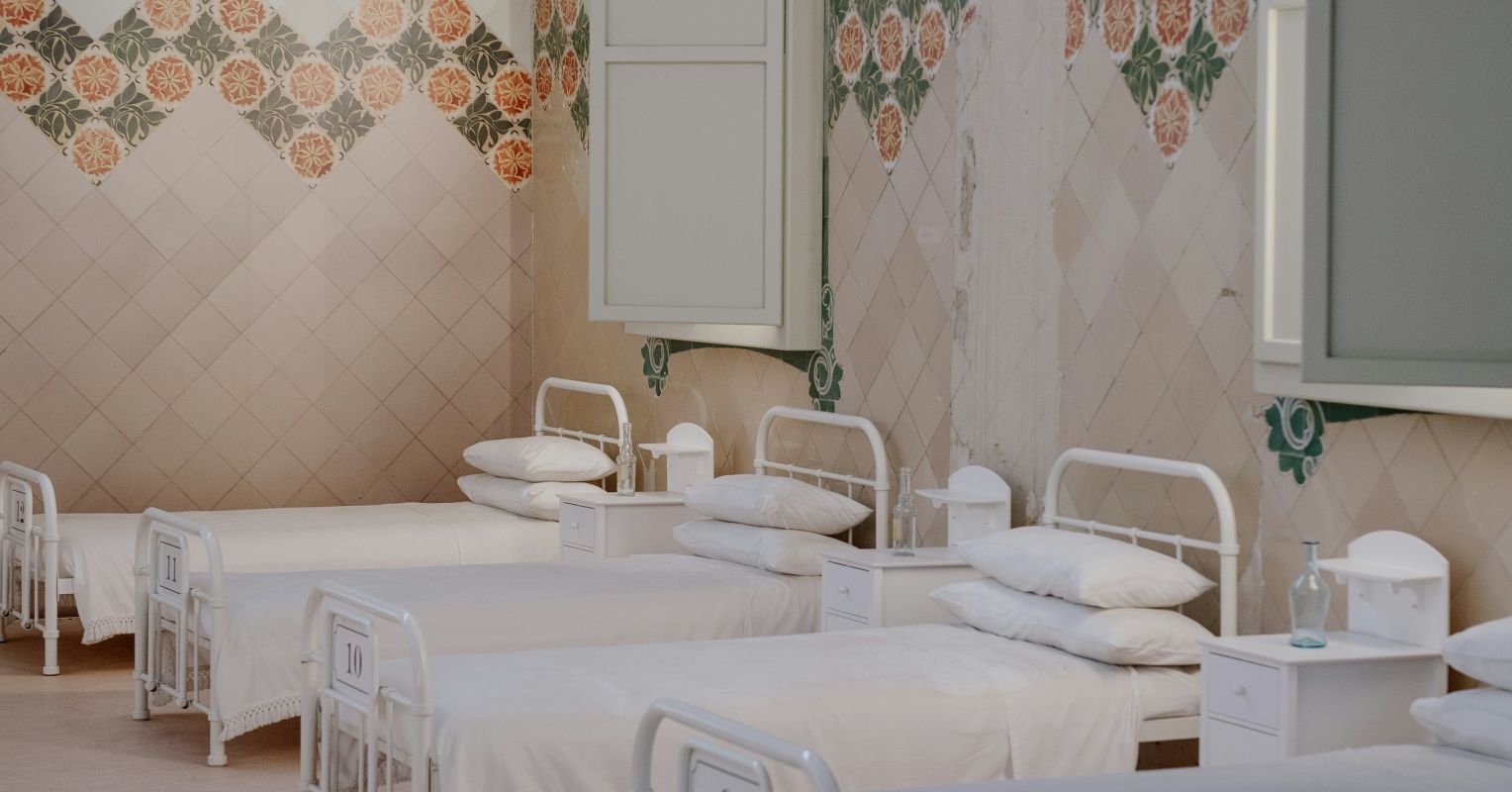
Co-authored by Eileen Cardillo, DPhil.
Even in the best of circumstances, receiving healthcare in America entails a great deal of waiting—waiting to check-in, waiting to be seen, waiting to meet with a physician, waiting for a test result, waiting for a procedure to begin or to be over with, waiting to push, waiting to heal, waiting for visitors, waiting to be discharged. From minutes to months, these liminal periods provoke emotions ranging from boredom or anxiety to celebration or despair. The built environment in which all this anticipation occurs is not neutral; it sculpts the emotional experience of its occupants with downstream effects on their health and well-being. Does the practice of adorning the walls of hospitals and other clinical spaces with visual art make a difference?
The Evidence
To address this question, we recently reviewed empirical studies of adult patients passively viewing types of visual art—nature imagery and other visual art images—in various healthcare environments.1 The benefits of realistic nature imagery were surprisingly robust given the limited number of studies (17), consistently indicating reduced stress, anxiety, and pain and enhanced patient satisfaction. These benefits were most evident during uncomfortable or painful procedures like GI probes, blood donation, burn dressing changes, and labor. Observed benefits associated with other types of visual art were weaker and more inconsistent, at least in part because fewer studies of this type exist, and they vary in quality (8).
In general, this line of research faces challenges similar to the early days of other applied research domains, like art therapy. Qualitative studies dominate, and the limited quantitative studies vary widely in design and methodological rigor. Best practices like power analyses, effect size reporting, and active control groups are not consistently included. Half of the reviewed studies were randomized controlled trials, the scientific ideal—the field will need more of the same moving forward.
Outstanding Questions
The evidence is promising, suggesting that visual art is not merely a superficial aesthetic flourish in healthcare spaces, but a genuine adjunct to standard medical care. Still, questions remain. Drawing upon lab and museum research in empirical and neuroaesthetics, we identify eight knowledge gaps where rigorous, experimental study could advance the field and its applied value.
- Which type of art is best? Current guidelines recommend against abstract art, endorsing representational works and nature imagery instead. This sweeping generalization overlooks the potential for ambiguous or challenging appropriateness for some audiences or in contexts of longer clinical stays that invite repeated exposure.
- How will evolving technology affect research? The benefits of static, two-dimensional art may be amplified by the immersive experiences afforded by emerging technologies like virtual reality or the personalization enabled by the ubiquity of digital devices.
- Does the clinical context matter? The selection of visual art should be optimized for the psychological demands of different contexts; waiting rooms, procedure spaces, post-operative recovery, and longer-term rooms or facilities create different goals. Critical considerations are the level and quality of illness of patients and the duration of their stay.
- Should individual differences be considered? The subjectivity of aesthetic appreciation and the demographic and cultural heterogeneity of patients may make diverse collections ideal when patient choice is not feasible.
- What is the impact on caregivers and clinical staff? Benefits to other key constituents are ripe for exploration. Art tailored to staff spaces has many potential positive outcomes yet to be measured, ranging from restoration of their health and well-being to increasing job performance, satisfaction, and retention.
- How can the benefits of visual art be maximized? Empirical aesthetics research suggests amplifying the benefits by deepening viewer engagement. Strategies include encouraging introspective or “slow” looking, facilitating conversation, and providing additional information.
- What mechanisms explain the benefits of visual art? Evolutionary, cognitive, social-emotional, and neural explanations for art’s benefits are not mutually exclusive. Understanding when they apply and for whom can inform strategies to strengthen their effects.
- Do practical benefits accrue beyond individual health and well-being? Individual studies hint at economic benefits to patients, institutions, and insurers, but the returns on investment for this low-cost intervention await measurement.
Moving Forward
Arts in healthcare is a multidisciplinary field, aiming to humanize healthcare and leverage the arts to enhance health and wellbeing. Programs include bedside art, art therapies, performances or displays in public spaces, the arts in medical education, and the design of the built environment.2 Of these, installing permanent art displays is the most common practice. Programs assume positive impact, based on the impressive range of health and well-being benefits associated with art engagement—an assumption generally supported by the limited available evidence.3 We are sanguine that with rigorous and theoretically motivated scientific study going forward, this partnership of art, design, and medicine will prove as objective as it is intuitive.
